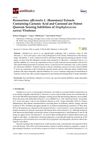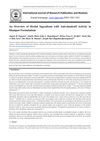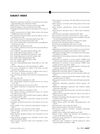Lifting the Biofilm Lid on the Antibacterial and Antibiofilm Effects of Sodium Hypochlorite Against Staphylococcus Aureus in Atopic Dermatitis
August 2017
in “
British Journal of Dermatology
”

TLDR Sodium hypochlorite can effectively prevent and remove Staphylococcus aureus biofilms in atopic dermatitis at high enough concentrations.
The document discusses a study by Eriksson and colleagues, which investigated the antibacterial and antibiofilm effects of sodium hypochlorite against Staphylococcus aureus in atopic dermatitis (AD). The study involved examining skin biopsies from patients with infected AD using scanning electron microscopy and testing the effects of sodium hypochlorite on S. aureus isolates through radial diffusion assays, biofilm assays, and confocal laser scanning microscopy. The findings indicated that sodium hypochlorite not only inhibited biofilm formation but also eradicated established biofilms at sufficient concentrations. This suggests that higher concentrations of sodium hypochlorite than the 0.005% solution typically used in clinical bleach baths might be more effective in treating S. aureus biofilms in AD patients. The study highlights the importance of antimicrobial treatments in managing severe AD associated with chronic infection and calls for further research into higher concentration bleach baths for treating and preventing infective flares of AD.





